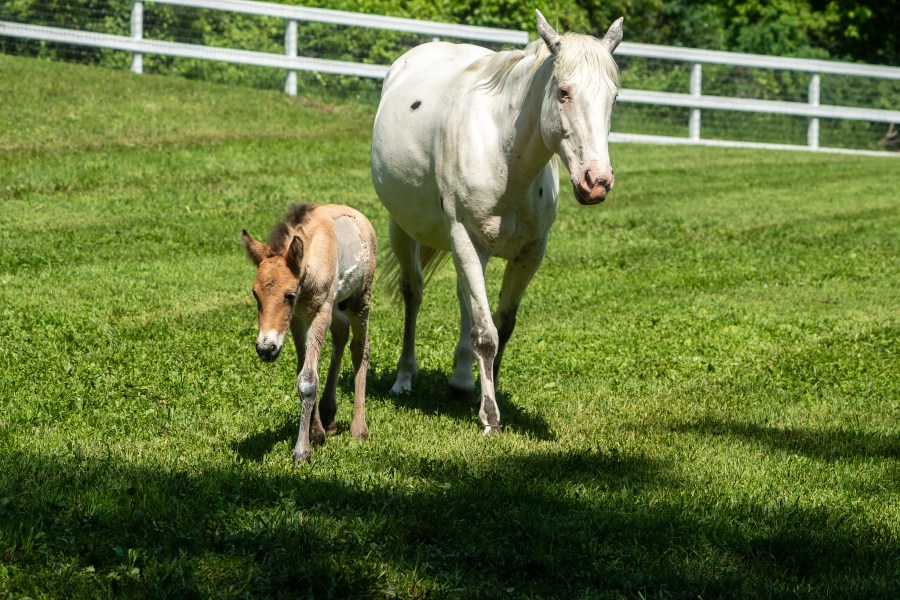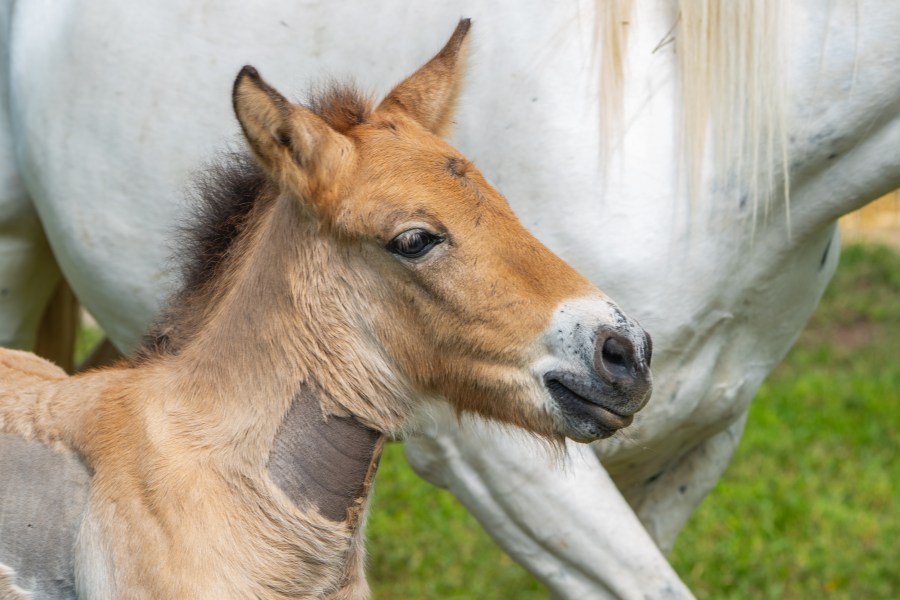A very special foal at the Minnesota Zoo in the USA is back on his hooves after nearly dying of sepsis — and it’s all thanks to the care of an unlikely foster mum from a different subspecies.
The foal, named ‘Marat’, is now thriving under the care of a grey mare called Alice. She is a pony of the Americas — a breed originally developed in Iowa during the 1950s for Western riding — and had recently lost her own filly foal.
Marat was born nine weeks ago — on 17 May — to mum ‘Nady’, an Asian wild horse (Przewalski’s). However, he became critically ill and required intensive care soon after birth.
“Marat was born with some limb problems that made it hard for him to stand up straight,” said Dr Annie Rivas, the zoo’s director of animal health.
“Because he was struggling to keep up with mom in the herd, he was spending a lot of time lying down on the ground and unfortunately developed bacterial sepsis. So, he was very, very sick.”
Marat was transferred to the University of Minnesota Veterinary Medical Centre for emergency treatment.
He made a full recovery, however, the temporary separation led to his mother rejecting him.
This behaviour is not uncommon in wild horses after a period of separation.

A foster mum
“That left us with, ‘what are we going to do with this foal?’” said Dr Rivas.
“We could hand-rear him, but we’re not going to be the ones who are the best at teaching him how to be a horse — especially a wild horse.”
Help arrived in the shape of Alice, a gentle and experienced mare living on a small ranch in North Dakota.
She was offered as a surrogate for the orphaned Przewalski’s foal by her owners Sylvia and Jeff Passow.
Despite being a distantly related species, Alice’s gentle nature and mothering instinct meant that the pair quickly bonded.
“It was a perfect fairy-tale ending. They just bonded [just] like that,” said Dr Rivas.
Video
‘A fairy tale ending’
Alice and Marat are now settled at the zoo’s Wells Fargo Family Farm, where visitors can watch them enjoying the sunshine.
Despite a genetic divide going back more than 40,000 years, the duo show that love and mothering can transcend species.
“This is the kind of story that reminds us of what conservation is all about: collaboration, compassion, and hope,” said Randy Kochevar, chief animal care, health, conservation and behaviour officer at Minnesota Zoo.
“Thanks to the Passows’ generosity and Alice’s instinct, this endangered foal now has a second chance.”

Back from extinction
Marat, which means ‘one who is brave’, is the latest in a growing line of more than 50 foals that have been born at the zoo.
Przewalski’s are considered the only remaining wild horse species, with fewer than 2,000 in existence today. It means that each foal is critical to the species’ survival.
They were once extinct in the wild, but thanks to global conservation efforts this hardy breed has made a remarkable return.
The Przewalski’s horse is smaller than most domestic horses.
They typically have stocky bodies, large heads, upright manes and a dark eel stripe on their dun coats.
These wild Mongolian horses are named after Russian geographer Nikolay Przhevalsky.
Images & video footage supplied by Minnesota Zoo








